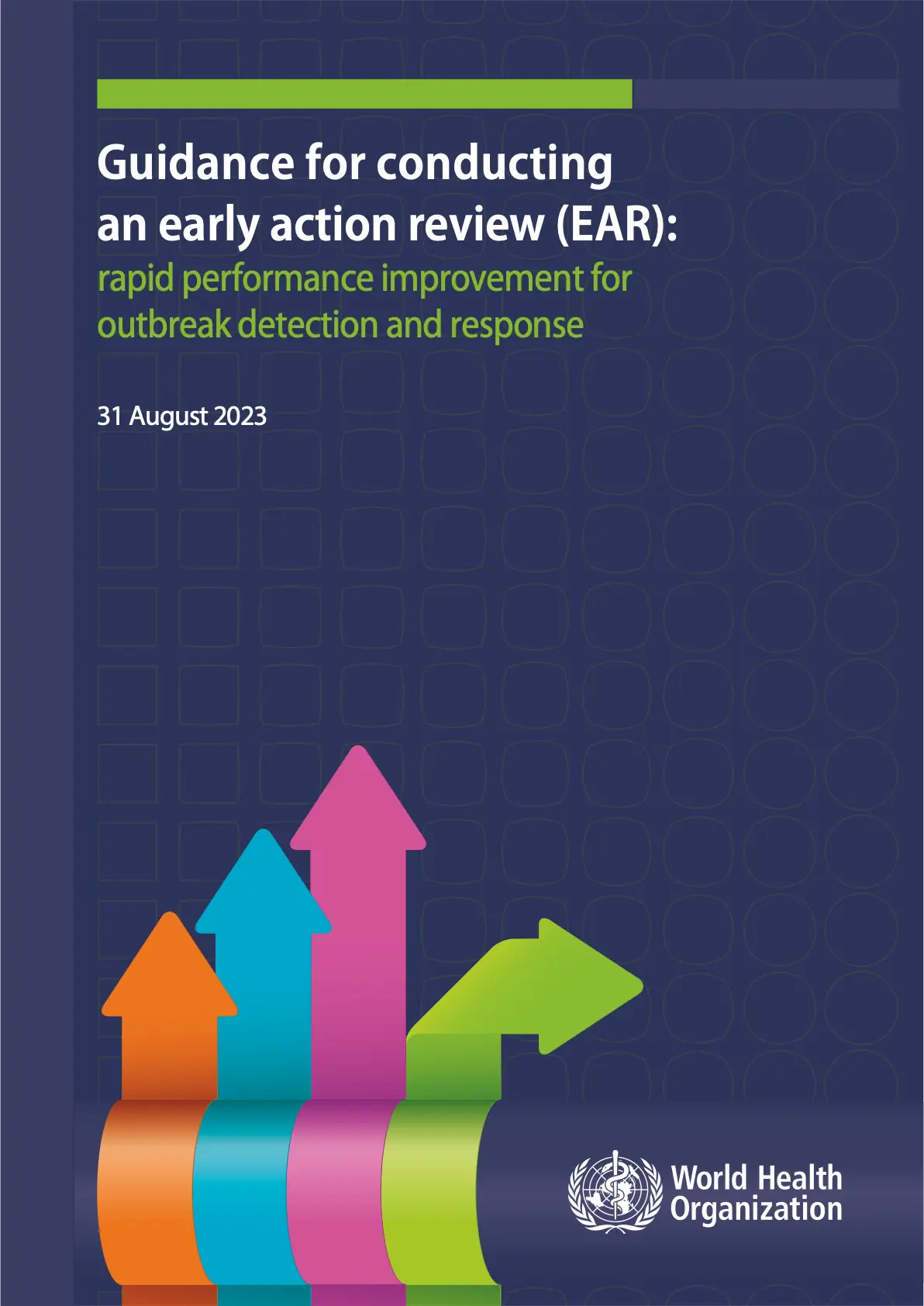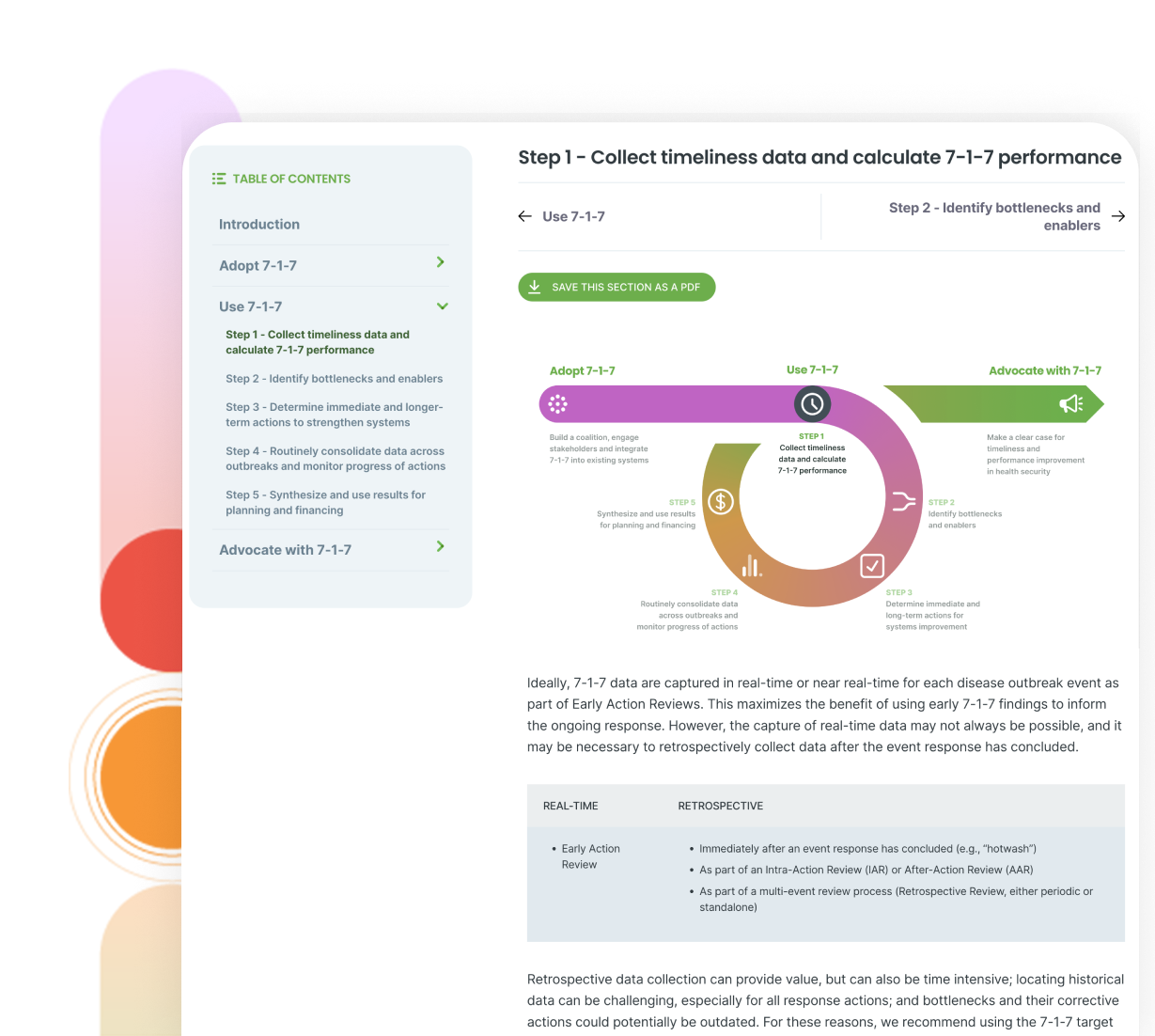Together, we are accelerating progress toward global health security.

The 7-1-7 Alliance is a country-led initiative providing technical assistance, financial support and a growing, global community of practice to help all countries achieve the 7-1-7 target for outbreak detection and control.
Infectious diseases move fast, and so must we.
The 7-1-7 target sets clear performance standards for three timeliness metrics:
Outbreak emergence
7 days to detect a suspected infectious disease outbreak
1 day to notify public health authorities
7 days to complete early response actions
DETECT
NOTIFY
RESPOND
When a country consistently meets the 7-1-7 performance standards, detection, notification, and early response systems are performing optimally to contain outbreaks before they spread. Ongoing use of the 7-1-7 target allows countries to improve their performance—the sooner threats are detected and contained, the more lives can be saved.
Countries rapidly improve detection, notification, and early response when 7-1-7 standards aren’t met by quickly and systematically identifying bottlenecks to timely and effective action. Once identified, many bottlenecks can be easily addressed, and progress on those requiring longer-term efforts can be accelerated by using 7-1-7 data to prioritize action and advocate for necessary resources.
Get started with 7-1-7

The 7-1-7 target was incorporated to the World Health Organization's Fourteenth General Programme of Work for 2025-2028. WHO has also issued guidance to conduct Early Action Reviews, which leverage 7-1-7 to clearly and routinely assess and rapidly improve how detection, notification, and early response systems are performing in real-world situations.
Digital Toolkit


We have resources for:
- implementation
- performance improvement
- monitoring & evaluation
- advocacy
- making the case
- more
- implementation
- performance improvement
- monitoring & evaluation
- advocacy
- making the case
- more
Our Resource Library is updated regularly with new webinars, implementation tools, and more.
Global health security is only as strong as the weakest link.
Sign up for our newsletter and stay updated on the latest from the 7-1-7 Alliance global learning network.



